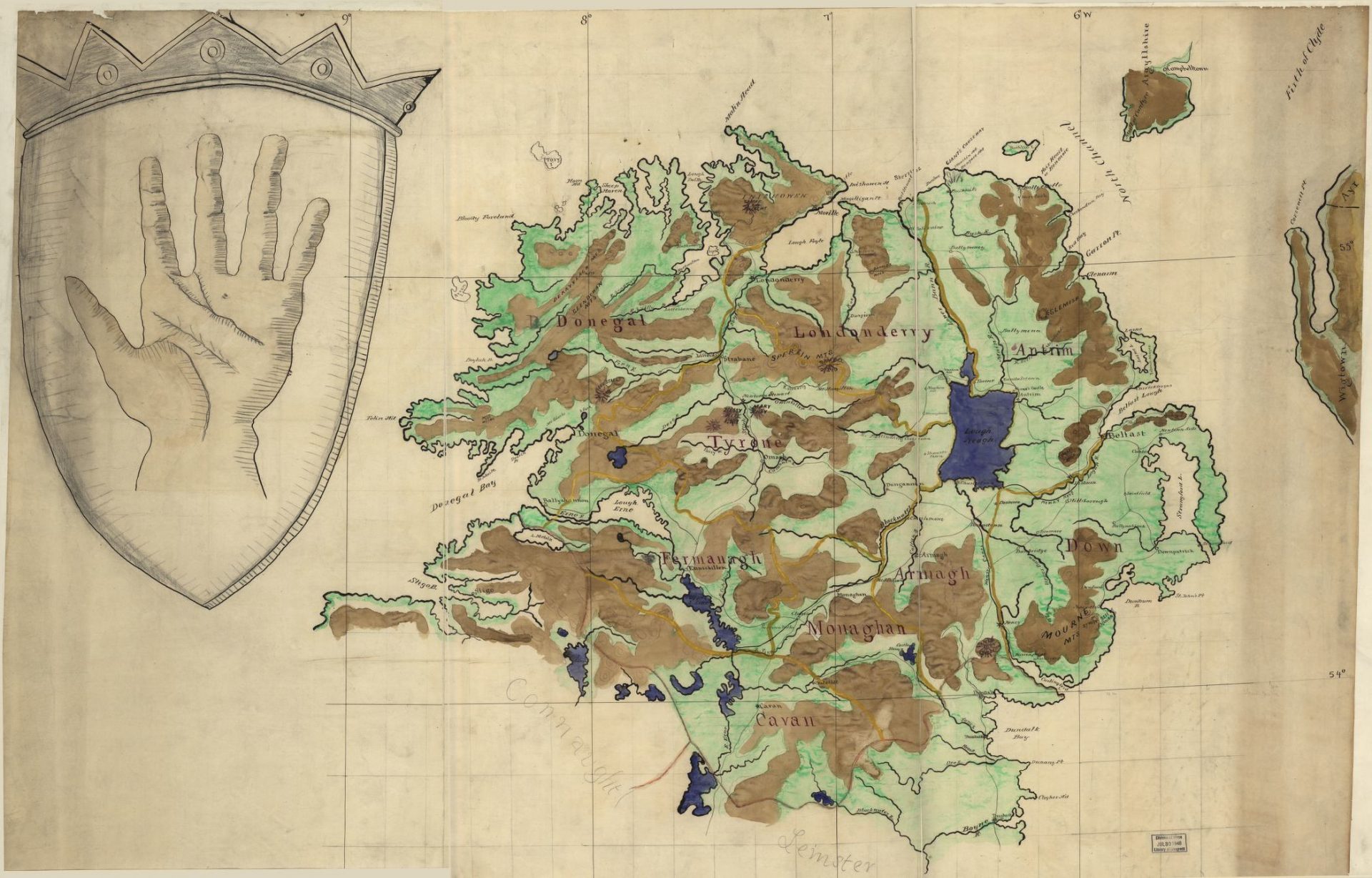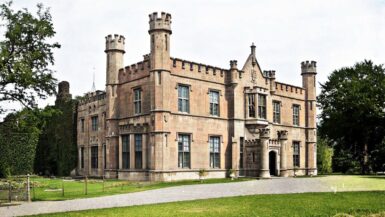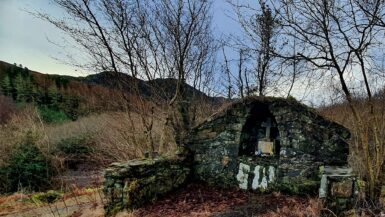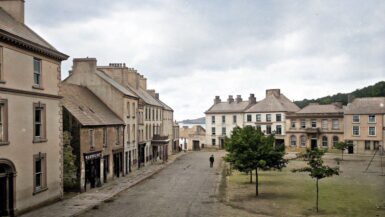Tir Eoghan the province of Owen was once a great principality, which stretched its frontier from the west of Lough Erne across Lough Neagh to the shores of the Channel by Belfast. In the days when Ireland
had a fate of her own Tyrone was the country of the O’Neill. Centuries after Strongbow centuries after the Norman invaders had become “more Irish than the Irish themselves,” Tyrone was still undisputed to chiefs of the Gael. Then came a period of nominal vassalage when the O’Neill was also Earl of Tyrone, a noble created by the English crown: and, while the Tudors ruled, the chief of Irish chieftains wavered between
his two dignities, until finally in the wavering both were lost and the fall of Hugh O’Neill, the last and greatest Earl of Tyrone, cleared the way for the Plantation of Ulster. It may simplify matters if I attempt the briefest and most summary sketch of the history of the latest subdued among Irish provinces.
Three great clans bore rule in Ulster. In the east were the Macdonnells of Antrim, Lords of the Isles, with a foot on each side of the narrow sea that we call the Moyle. Their sway at its height stretched from Larne to the Bann and inwards to Antrim and Coleraine. In the north-west was the lordship of Tyrconnell, which answers roughly to the county of Donegal, though many a time the O’Donnells, its rulers, overstepped their bounds into Sligo ; while on the other hand Inishowen, the peninsula between Lough Swilly and Lough Foyle, was disputed to them by the O’Neills. Between the two lay Tyrone, stretching its power down to the very confines of the English pale at Dundalk. But the divisions were there long before England was a coherent nation. Niall of the Nine Hostages was King of Ireland from 379 to 405, and his eight sons cut themselves out principalities all over Ireland. The Hy-Niall, or sons of Neill, soon divided into a northern and
southern branch ; and of the four sons who came north the two greatest were Eoghan and Conall, who because he was fostered on Gulbane mountain now Benbulben was called Conall Gulban. Conall made his home on Donegal Bay, and Eoghan upon the Inishowen hills, and from them descended the Kinel Conall and Kinel Eoghan, who ruled in Tyrconnell and Tyrone. Patrick in his first missionary journey, about 450 A.D, found and baptised Conall in his palace on the north bank of Erne ; and thence he made his way to the Grianan of Aileach, where Eoghan held his fortress perched on the heights that lie between Derry and Lough Swilly. Time went on, and the descendants of Niall fought either as foes or as allies. Together in the ninth century they drove out the Danes who attempted landings on Lough Foyle; but oftener the Kinel Eoghan found the Kinel Conall driving their cattle or in their turn repelling a raid. About 950, the leaders of the two great clans adopted the practice of calling themselves the O’Neill and the O’Donnell. This use of surnames was soon rendered universal by a law of Brian Boru passed in 965, that every family should take a surname from some distinguished ancestor ; and so from that day begins the era of the Macs and Os. Sons of Donnell, sons of Niall, sons of Brian, and the rest.
Extract from:
Highways and byways in Donegal and Antrim (1903)
Map of Ulster Province, Ireland. [188-?] Retrieved from the Library of Congress






Leave a reply